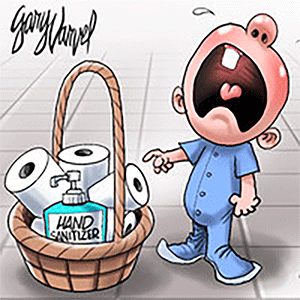Eric's Autos: They're All Government Motors Now
GM gets ribbed a lot (and rightly so) for being "government motors" ... having accepted (no,demanded) enormous sums of taxpayer money in order to avoid bankruptcy. The bailouts were the corporate equivalent of EBT (which conservatives somewhat oddly or at least, inconsistently, dislike . . . their ire apparently reserved for needy and greedy humans rather than needy and greedy corporations). Anyhow, the plain fact is they're all government motors now. Every car company is a subsidiary of Uncle.
Either they are on the dole, or they are on the payroll. Does it really matter (to us, the people who pay the freight) which? The bottom line is they have their hands in our pockets. Or rather, they have appealed - successfully - to Uncle, who has his hands in our pockets. And, of course, a gun to our heads - implied, at least. Actual, when necessary.
What's happened is that the car companies decided about 20 years ago to work with the government rather than for their customers - on the theory that if you can't beat 'em, join 'em. Instead of fighting mandates tooth and nail - government bureaucrats decreeing the features and equipment your next new car will have (and which you will pay for) - the car companies came to the realization it was less hassle (and more profitable) to embrace the mandates. Even to the extent of anticipating the next one.
To assist the government in thinking up new things to charge people for. For example, back-up cameras. These will no longer be optional after model year 2017. If you want to buy a 2018 model, you will have no choice about buying the camera. For "safety," of course. And de facto, this is already the case.
It is hard to find a 2015 model car or truck that doesn't have a back-up camera as part of its suit of standard equipment. Often, it is "bundled" with features you might actually find useful or desirable - like an upgraded audio system or GPS. Rather than wait for the mandate to kick in, the car companies went all-in early.
Not because buyers were clamoring for the cameras. But because the cameras add $$$ to their bottom line - and not just to the purchase price of a new car, but also to the cost of repairing the car. It's inevitable that, at some point, either the camera itself (which is located outside the vehicle, usually built into the bumper or trunk/decklid and so exposed to the elements) will crap out. Or the LCD display inside the car (typically either built into the center stack or the rearview mirror) will develop a fritz.
And because these cameras will be part of the federally mandated suit of "safety" equipment, it is a legal requirement that the system be maintained in operational condition on your dime. Else the car fails the mandatory (in many states) "safety" checks one must submit to every year in order to renew the registration. Ka-ching!
In the past, the car companies would have fought this force-feeding on the theory (now severely anachronistic in Mussolini-ized America) that customers weren't clamoring for it.. Or at least, let's offer it and see whether they're freely willing to buy it. If they are - great. Sell it to 'em. But if not, drop it. That was the approach taken with air bags - initially.
But when people did not buy them willingly, the government decided this was unacceptable - and ordered them to buy. This occurred in the '90s and marked a turning point, a sea-change attitude shift. The car companies realized (perhaps accepted is the better word) that, like it or not, government had become their "demographic" - the car industry term for the object of their efforts, the audience they build cars for.
The reason today's cars are so bleakly homogenous is a function of this. They are all designed to fit within a certain template - the big one being "crashworthiness" requirements but there are other templates, too. These templates are dictated by the government but nowadays, they are full-hug embraced by the car companies, too. For example, their engineers and "product planners" work directly with government bureaucrats to develop, implement and anticipate crash test requirements. This effectively dictates vehicle design - including the overall shape - of new cars generally.
...continued






